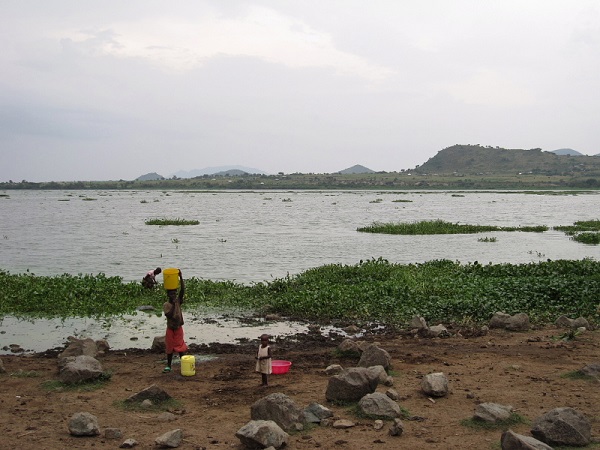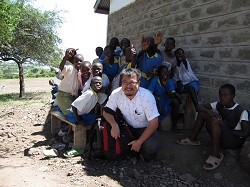February 5, 2016
Schistosomiasis is a parasitic disease that was once rampant throughout Japan. Until the discovery and nomenclature of the pathogen causing the disease by Fujiro Katsurada in 1904, it had been feared as an unknown sickness that would lead to death. With the subsequent discovery by Keinosuke Miyairi of the intermediate host, which is a type of freshwater snail, the lifecycle became known. Using this knowledge as the scientific foundation, the spread of the disease was terminated in Japan in the 1970’s after much effort from every quarter. However, there are currently over 260 million people infected with schistosomiasis throughout 78 countries worldwide, making a global response an urgent issue.
Nagasaki University has an overseas research site in the Mbita region of Kenya, which lies on the coast of Lake Victoria. When examining stool samples of children for schistosoma eggs, at one elementary school, almost all grade 4 students were infected with Schistosoma mansoni. In this region, the infection rate among students is 75%, and even in pre-school children it is 50%. Here, malaria, tuberculosis and AIDS are also endemic, and there are many orphans whose parents have both died due to AIDS. When considering the futures of these children, it is a very dire situation.
Similar to Eisai’s free provision of the lymphatic filariasis treatment diethylcarbamazine to WHO for its Global Programme to Eliminate Lymphatic Filariasis, another pharmaceutical company provides medicine for schistosomiasis to endemic areas for free. However, we have come to see that there are many hurdles involved in ascertaining the situation on the ground, developing and evaluating medicines, vaccines and diagnostic kits needed for production, and sending the tools to inhabitants. In order to improve access to medicines, even more serious initiatives are required in every country, and public-private-academic partnerships should be further deepened.
Many of the neglected tropical diseases are infectious diseases caused by parasites and endemic in tropical and sub-tropical regions struggling with poverty. The characteristics of parasitic diseases are that they damage people’s health over a long period of time, and despite having low rates of mortality in general, these diseases result in terrible pain and serious socio-economic damage. It is not hard to imagine that there is a big difference between “living with the burden of disease” in a situation where health and welfare services are extremely limited and contracting the disease in a favorable environment. In order to enable these children to live with hope for the future, I would like to etch the moral of the Ecuador folk tale “The Little Hummingbird” in our hearts.
“The world is made up of individuals like you and me. That’s why, if you and I change just a little, the world will change just a little too.” (Translated from “A Drop from a Hummingbird” by Shinichi Tsuji, Kobunsha)


Reporter

Shinjiro Hamano
Professor, Department of Parasitology, Institute of Tropical Medicine (NEKKEN), Nagasaki University
